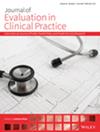Nonpharmacological Methods and Pain Measurement Tools Used by Nurses Working in Surgical Clinics for Postoperative Pain Management
Abstract
Objective
This study was conducted to determine the nonpharmacological methods and pain measurement tools used by nurses working in surgical clinics for postoperative pain management.
Materials and Methods
In this cross-sectional and descriptive study, n = 107 nurses working in the surgical clinics of a university hospital in western Turkey between March and June 2024 were included.
A ‘Questionnaire for Postoperative Pain Management’ consisting of 26 questions which was created by the researcher in line with the information in the relevant literature was used to determine the practices of nurses working in surgical clinics regarding pain management and the scales they use. Frequency, percentage, mean, and standard deviation values, Chi-Squared tests, t-tests, and ANOVA were used to analyze the data.
Results
It was determined that 49.1% of the participants were in the 18–29 age group, the mean age of all participants was 30.72 ± 6.79 years, and 67.3% of the participants had bachelor's or master's degrees. The participants had a mean professional experience of 9.75 ± 7.32 years, 56.1% of them did not educate their patients about pain relief methods in the preoperative period, 81.3% used scales during pain assessment, the most commonly used scale (61.9%) was the ‘Numerical Rating Scale,’ 63.6% used nonpharmacological pain relief or reduction methods, and the participants who received training on pain applied nonpharmacological methods more frequently than those who did not receive training. It was found that the participants who provided education to preoperative patients used scales more frequently during pain assessment than those who did not provide education to preoperative patients.
Conclusion
The results of this study showed that nurses who had more professional experience and those who received training on pain during their professional education and after their graduation had more knowledge and favorable practices regarding pain and the management of pain.

 求助内容:
求助内容: 应助结果提醒方式:
应助结果提醒方式:


